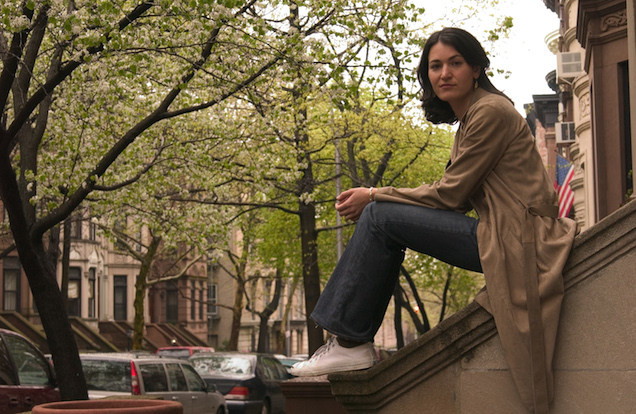
Whether you’re looking for a fun beach read or a serious time that’ll keep your mind sharp in the heat, we’ve got you covered with 10 of summer’s hottest books.
1. Florida, by Lauren Groff
This collection of short stories from the acclaimed author of Fates and Furies is a dark dive into the minds of people struggling with themselves—and with the menacing strangeness of the weather in the Sunshine State. A vacationer who waits out a storm with a creepy shopkeeper; a grad student who becomes homeless; and an author who frets over her sons’ futures are just a few of the characters you’ll meet in this meditation on what Groff, who lives in Gainesville, calls a “reptilian, dangerous, teeming” state.
2. My Year of Rest and Relaxation, by Ottessa Moshfegh
A kind of Valley of the Dolls set in post-Y2K NYC, Moshfegh’s third novel follows a wealthy 20-something so tired of her lonely, vapid life, she opts for a year-long regimen of pills that will help her “drown out her thoughts.” But when her dosages intensify, our zonked heroine spirals down a darkly comic rabbit hole. Publisher’s Weekly calls her devolution, “challenging but undeniably fascinating, likely to incite strong reactions and much discussion among readers.”
3. French Exit, by Patrick DeWitt
What more could sophisticated bibliophiles want in a summer read than a “tragedy of manners”? Such is deWitt’s French Exit, which follows a wealthy widow from the Upper East Side and her emotionally stunted, adult son, as they flee New York City scandal (and impending bankruptcy) for the cultured sanctuary of gay Paree. Along the way, they meet a number of characters as bonkers as they are—a doctor who makes house calls accompanied by his wine merchant, and a terribly shy PI, for instance—and continue to self-destruct in entertaining fashion. From the mind that brought you the Man Booker Prize-shortlisted, The Sisters Brothers.
4. Asperger’s Children: The Origins of Autism in Nazi Vienna, by Edith Sheffer
With Asperger’s Children, historian Sheffer probes the life of the Austrian pediatrician after whom the autism syndrome is named. Far from a compassionate champion of all children, Asperger may have been complicit in Hitler’s genocidal crimes, Sheffer alleges, trying to “mold” the minds of certain autistic children, while sending others, those deemed “untreatable,” to death camps. Though focused on the career of one man, her nonfiction account is large in scope. Says the NYT: “[Sheffer] shows how the Third Reich’s obsession with categories and labels was inextricable from its murderousness; what at first seems to be a book about Dr. Hans Asperger and the children he treated ends up tracing the sprawling documentary record of a monstrous machine…”
5. Lost Empress, by Sergio de la Pava
Publisher’s Weekly calls de la Pava a “maximalist worldbuilder,” and his latest novel does indeed seem to warrant the praise. Set in Paterson, N.J., Lost Empress centers on Nina Gill, a football strategist whose current job is an insult to her gifts, and Nuno DeAngeles, an intelligent convict who manipulates his way from Rikers Island to the comparatively nicer Bellevue Hospital, where he conspires with his fellows to commit a crime. As the story progresses, we glimpse the lives of other Paterson locals, such as telephone operators, EMT’s and mascots, via such diverse texts as phone transcripts, prison handbooks and sermons, to name just a few. New Jersey may not smack of exoticism, but with his signature talents, de la Pava makes it a world all his own.
6. I Can’t Date Jesus: Love, Sex, Family, Race, and Other Reasons I’ve Put my Faith in Beyoncé, by Michael Arceneaux
With biting humor and unabashed frankness, Arcenaux has written 17 essays about his life as a gay black man raised Catholic in the South. Topics include a childhood in which he prayed to Jesus to “cure” him of his homosexuality; his misadventures as a young professional trying to make it as a writer (including the limited and limiting topics editors would assign someone of his race and sexual orientation); and his misbegotten dating escapades, with men who infested his apartment with fleas, and who—the horror!—worked for Fox News. A must-read for people interested in a witty take on the issues of our day.
7. Some Trick, by Helen DeWitt
Misunderstood geniuses and those who want to profit off them—primarily in the publishing world—are the subjects of this short story collection that has been garnering high praise. An author ditches a lunch meeting with an agent in favor of holding an imaginary conversation with a far more logical robot; a reclusive writer is menaced by the indefatigable industry players who want to publish his work; and a woman decides to go to bed with a man simply because she can’t summon the energy to refuse him… These are just a few of the characters and situations that will entertain and challenge you in DeWitt’s sparklingly intelligent stories.
8. The Good Son, by You Jeong-Jeong
This novel, the first from the writer who is popular in her native South Korea to be translated into English, is a gift for lovers of thrillers and crime stories. We open with our hero awakening to “the smell of blood.” From there, he, our law-student protagonist with a history of seizures, enters his kitchen to find his mother dead on the floor. He tries to remember what he did last night, but can recall little more than the fact he went for a run. Is it possible he killed his mother? The plot twists from there as readers must determine just how much they can reply upon their narrator.
9. Kudos, by Rachel Cusk
The final installment of Cusk’s masterful trilogy sees our writer protagonist, Faye, traveling through Europe to give a series of talks and interviews. As with the series’ previous two novels, Outline and Transit, Faye takes a backseat to the people she meets: Kudos is comprised of conversations and interviews with, as well as simply the monologues of, those she encounters on her journey. In form and structure, Kudos is another untraditional narrative from Cusk. It seems to illustrate the primacy, even as it deconstructs, the popular notion of, ‘The Stories We Tell Ourselves In Order to Live.’
10. This Mournable Body, by Tsitsi Dangarembga
The Zimbabwean protagonist of Dangarembga’s first novel, Nervous Conditions, has become a middle-aged woman tired of her dead-end job at an ad agency. After quitting, Tambudzai secures work as a biology teacher, all the while dreaming of the life she will one day lead. When her former boss offers her a glamorous-sounding job, she thinks her moment has arrived. But Dangarembga’s is no facile, make-you-feel-better-about-yourself fiction; Tambudzai suffers one blow to her fantasies after another until she must finally acknowledge the fact that her lived reality is nothing like her dreams. In addition to chronicling the journey of one remarkable character, This Mournable Body is a searing indictment of capitalism and post-colonialism.

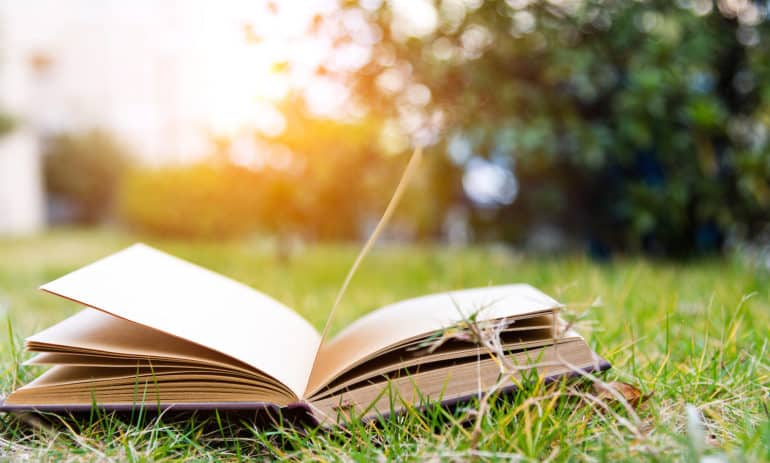
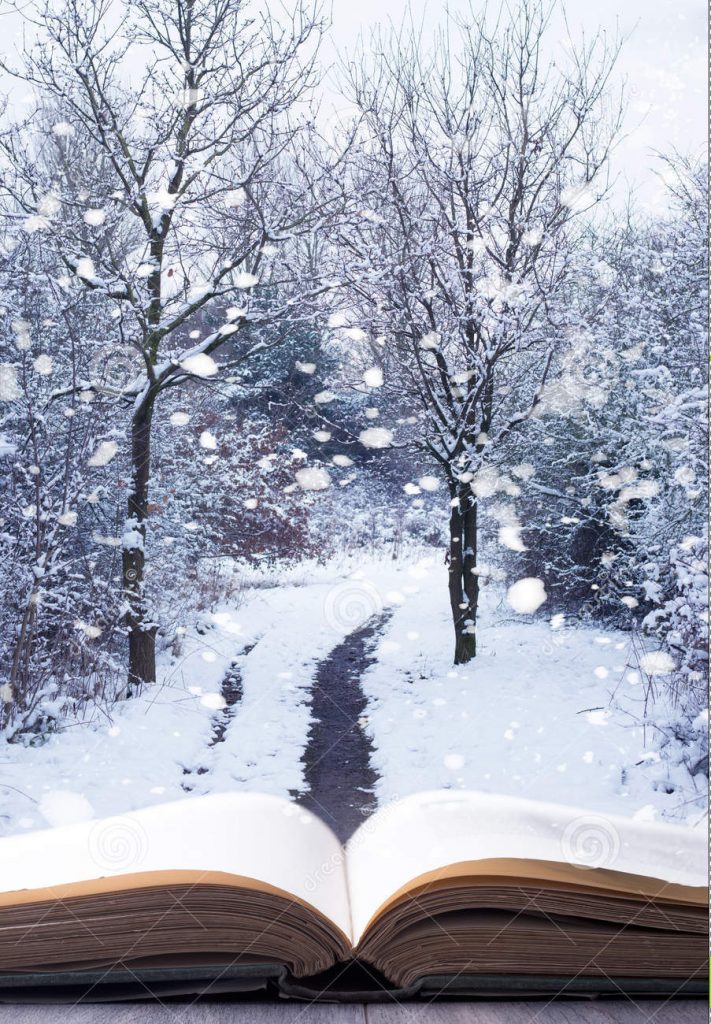
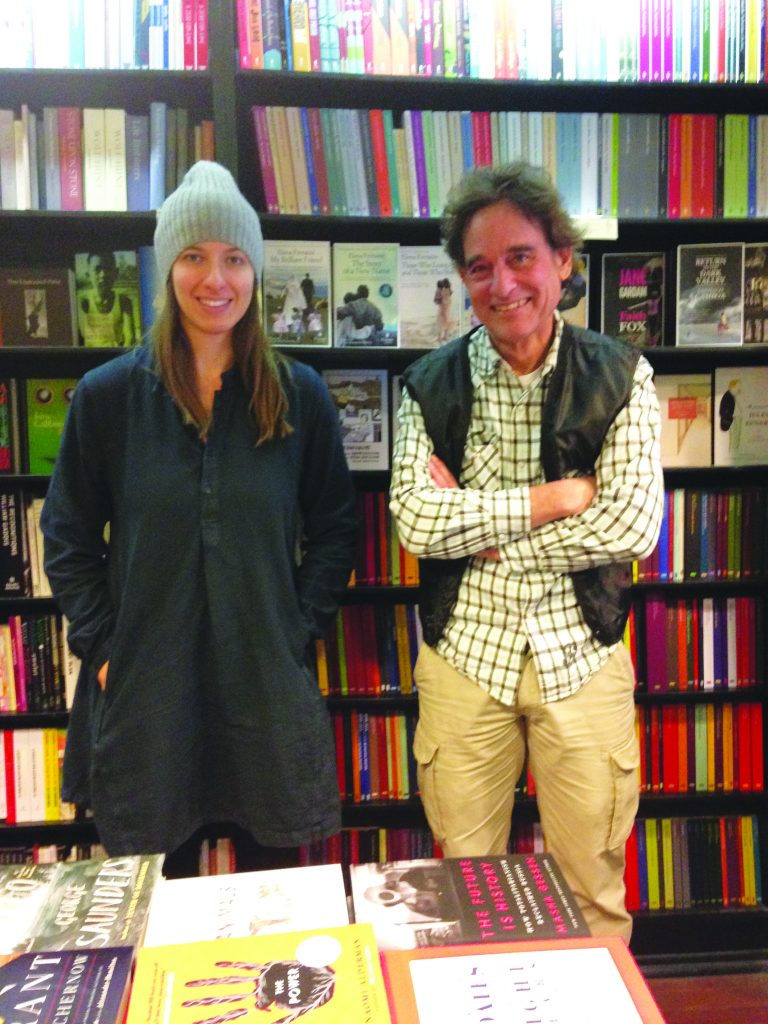
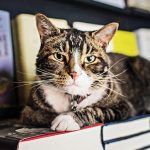 “You’re really catching us on quite a day,” said Stephanie Valdez when I met up with her and Community Bookstore co-owner Ezra Goldstein one afternoon early in December. Not only was the usual holiday rush upon them, there were last-minute children’s book fairs to coordinate (“it’s almost like setting up two more stores”), book orders to be completed without delay, and sniffles to be suppressed as best one could. (All sneezes have been omitted from the following conversation.) Yet the staff was in good cheer. When I arrived, Ezra was standing by the front register regaling several employees and a customer with a story. Stephanie laughed as she typed busily at the computer, while store mascot Tiny the Cat lounged with characteristic disinterest inside his basket in a corner of the window.
“You’re really catching us on quite a day,” said Stephanie Valdez when I met up with her and Community Bookstore co-owner Ezra Goldstein one afternoon early in December. Not only was the usual holiday rush upon them, there were last-minute children’s book fairs to coordinate (“it’s almost like setting up two more stores”), book orders to be completed without delay, and sniffles to be suppressed as best one could. (All sneezes have been omitted from the following conversation.) Yet the staff was in good cheer. When I arrived, Ezra was standing by the front register regaling several employees and a customer with a story. Stephanie laughed as she typed busily at the computer, while store mascot Tiny the Cat lounged with characteristic disinterest inside his basket in a corner of the window.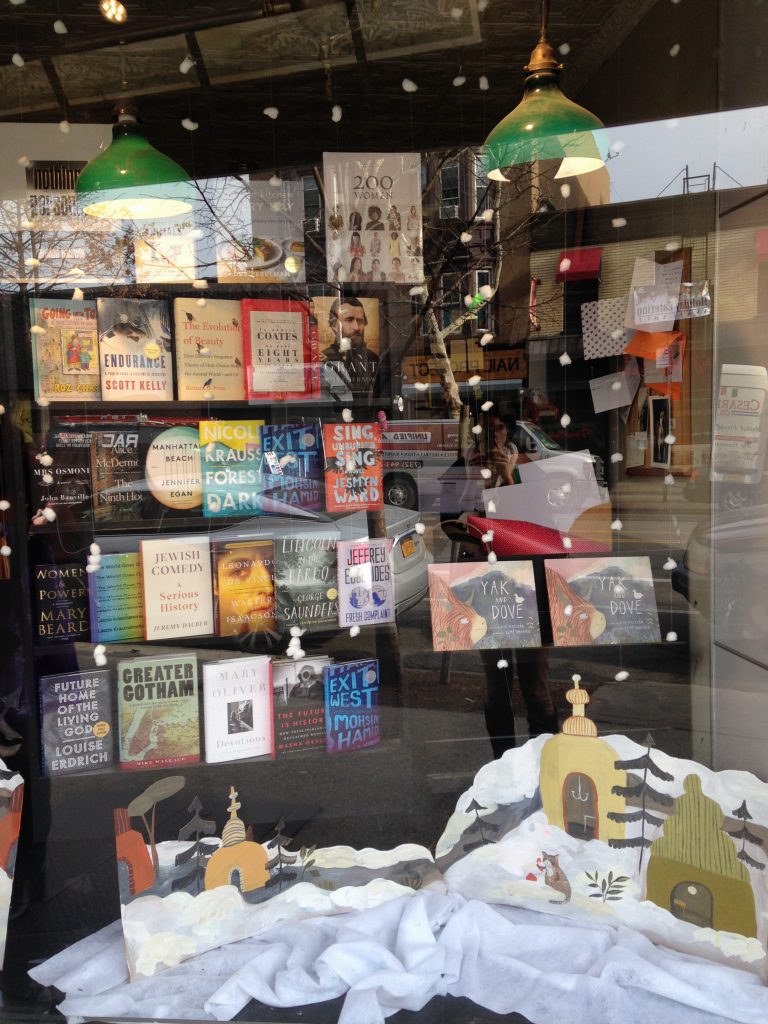
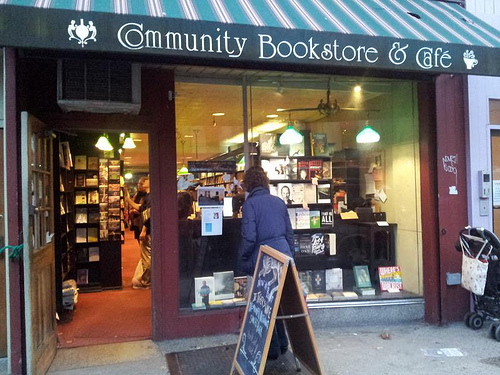
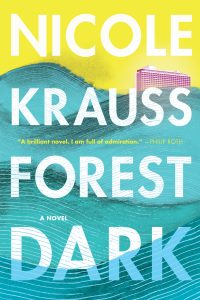 The characters in Forest Dark are neither “empathetic people from the first page,” as they were in The History of Love, nor are they quite those “who, from the first, were difficult people, as people are,” such as populated her Great House. They defy easy categorization while tempting you to draw connections between their own journeys through parts unknown with what you might think you know of Krauss. They include the elderly Jules Epstein, a wealthy and formerly gregarious New York attorney who has begun selling off his considerable possessions. On page one we learn he has disappeared from the rundown Tel Aviv apartment in which he had been living alone. And we have the protagonist of a parallel story that, in true Krauss fashion, is recounted in alternating chapters, a novelist living in Brooklyn with two sons, and a husband from whom she feels increasingly distanced. Ostensibly to research a new book, she, too, leaves for Tel Aviv. Her name is Nicole.
The characters in Forest Dark are neither “empathetic people from the first page,” as they were in The History of Love, nor are they quite those “who, from the first, were difficult people, as people are,” such as populated her Great House. They defy easy categorization while tempting you to draw connections between their own journeys through parts unknown with what you might think you know of Krauss. They include the elderly Jules Epstein, a wealthy and formerly gregarious New York attorney who has begun selling off his considerable possessions. On page one we learn he has disappeared from the rundown Tel Aviv apartment in which he had been living alone. And we have the protagonist of a parallel story that, in true Krauss fashion, is recounted in alternating chapters, a novelist living in Brooklyn with two sons, and a husband from whom she feels increasingly distanced. Ostensibly to research a new book, she, too, leaves for Tel Aviv. Her name is Nicole.